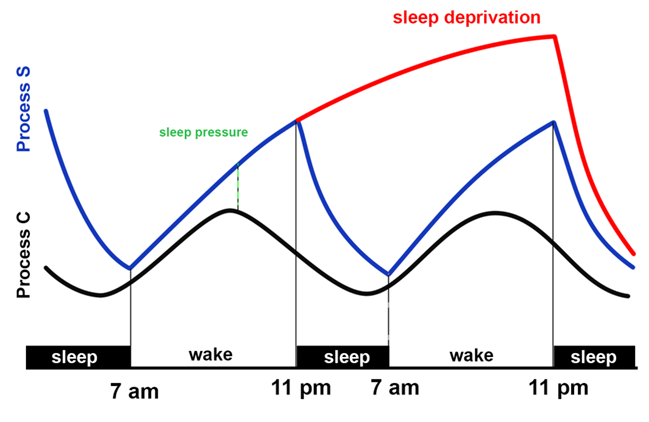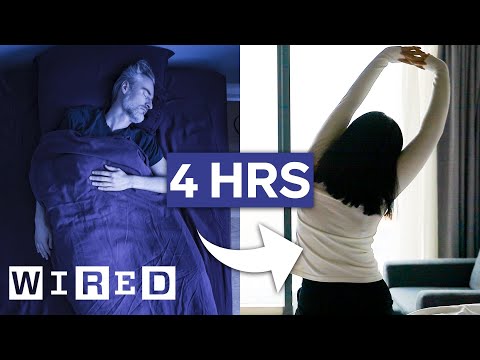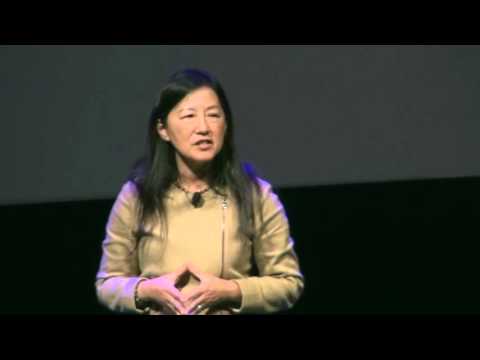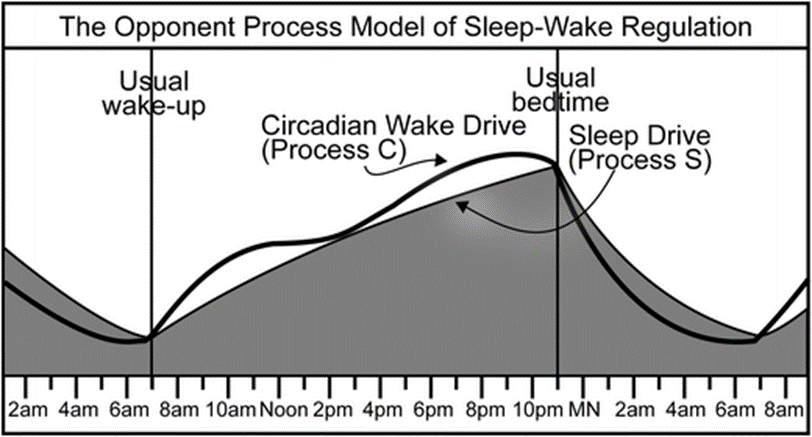Lets talk about Dec2 and orexin.
Dec2 is essentially involved in Circadian rhythm regulation at the molecular level known as the transcriptional feedback loop. This loop essentially helps with the synchronization of the circadian rhythm with whatever cue (light, food, etc). At the core is a molecular feedback loop in which the proteins brain and muscle ARNT-like 1 (BMAL1; also known as ARNTL) and CLOCK act as transcriptional regulators and drive the expression of the period homologue 1 (PER1), PER2, PER3 and cryptochrome 1 (CRY1) and CRY2 genes. A complex that is formed by PER1, PER2, PER3, CRY1 and CRY2 proteins enters the nucleus and then impedes the BMAL1 and CLOCK-mediated transcriptional drive. The complex therefore acts as a transcriptional repressor of its own genes. DEC2 is part of a transcription regulation process where they function similar to Per1 AND Cry 1, where they can repress transcription of BMAL/CLOCK.
Circadian rhythms play a role in timing and synchronization of some process to some cue. In diurnal creatures their circadian clock synchronizes where light = awake/activity processes and night=sleep/rest processes. There are many other processes that the circadian rhythm impacts. It can influence many other organs and activity, sleep is just one of those processes but not the only.
There are contrasting thoughts on the circadian rhythms influence sleep.
There are multiple schools of thoughts and a lot of debate of circadian rhythms influence on sleep. I personally don’t think any of them are right at the moment, since it’s hard to separate the interaction between sleep and circadian processes completely.
There is the two process model, where Process C(circadian rhythms) controls the TIMING of sleep/wake, and process S is the sleep pressure accumulation throughout wake that DRIVES SLEEP NEED.

I think this model is the most accurate in terms of evidence, but there are exceptions to this model.
There is also the opponent process model where there is a competition between Process C and Process S. In this model , Process C drives us awake. Process S accumulates during wake, competing with Process C to control the behavior of the organism. Process C stays high throughout the day but then dips around 2-3pm jn the day. In this time period Process S would be high and could potential result in sleep. This period is where Nap would potentially occur. The Process C drive then promotes wake again, and process S accumulates. At bed time, Process S over takes Process C , resulting in sleep where both Process S and Process C drive decreases and repeats the next day.
Evidence for this model is lacking in terms of credible studies so most people stick with the two process model.
Regardless, there are examples that can be exceptions to the processes such as mutations in clock genes resulting in changes in sleep timing/pressure(PER3, CLOCK, BMAL1,etc). There are also examples where disruption of circadian genes has no influence on sleep timing or pressure. The consensus is mixed that I find neither model to be all encompassing now.
If we look at DEC2 by itself, it plays a important role in circadian rhythms but other proteins can take its role. Mutations in DEC2 cause short sleep syndrome, but it’s hard to discern its exact role in the mechanism or if its having a direct influence on sleep directly or other processes that may influence sleep. An example could be orexin.
Orexin is a neurotransmitter that is a part of the ascending arousal system(wake promoting system) of the brain circuitry that promotes sleep. Orexin is thought of as a “switch” that changes the behavior of the brain circuitry to either activate and stabilize wake, or shut off the arousal system. Orexin is released from the Lateral hypothalamus and drives to activate the ascending arousal system and stabilize its activation. A region that is responsible for promoting sleep is the Ventral Lateral Preoptic Nucleus(VLPO) and serves as a place where inhibitory signals are sent to wake promoting regions, initiating sleep. Orexin will inhibit regions involved in sleep and REM from activating. In Narcolepsy orexin is lost which is why those individuals enter REM sleep or enter sleep randomly.
The idea essentially is that orexin controls the transition state between wake and sleep. There is controversy in this idea of orexin, but that is one plausible school of thought.
The issue becomes in that orexin and VLPO neurons have mutual projections, but VLPO lack orexin receptors. Orexin seems to reinforce arousal system properties but does not directly inhibit the VLPO. One interesting fact about sleep is that you can lesion any of this brain circuitry involved and have sleep still occur. This fact alone is why I think that all these brain circuitry and processes are just a part of the nature of sleep and are just areas that act in certain ways during sleep but do not govern it sleep completely. Also too, orexin may be playing another role we have yet to distinguish in the whole sleep-wake biology. Look at the VLPO. VLPO has GABAergic neurons that inhibit wake promoting circuitry, but recent evidence has found there are different GABA receptors in the VLPO and they do contrasting things.
Although DEC2 results in short sleeper syndrome, it is very rare. Also, DEC2 seems to play a role in sleep, but is it directly or through other influences (i.e changing other organ behavior that influences sleep/wake, involved in some separate biological process that somehow alters sleep )? There have been examples of Clock Genes that can alter sleep but not be located in the brain(in whole body Bmal1 KO, restoring Bmal1 expression in the brains of Bmal1- knockout mice did not rescue Bmal1-dependent sleep phenotypes. Surprisingly, most sleep- amount, but not sleep-timing, phenotypes could be reproduced or rescued by knocking out or restoring BMAL1 exclusively in skeletal muscle) so is everything acting in the brain or other tissues? Same can be said about orexin.
The increase in hypocretin proteins suggest to me that the benefits are not with shortening sleep, but something to do with either the decreased need for sleep or something involved with another process. The author’s even state “that reduced need for sleep is more a reflection of increased robustness and health resulting from this mutation than any independent, top-down alteration of the regulation of sleep”. Also, what other effects might this mutation cause?
There is SIGNIFICANT studies showing that sleep deprivation or not getting normal sleep is detrimental and that changes to circadian rhythmicity is also detrimental (Shift work is a good example).
I think more information needs to be gathered. We don’t really know the exact role orexin plays in sleep or DEC2’s mechanism of action. DEC2 may be a target of interest but also may not be having benefits in altering sleep and acting through some other property.



